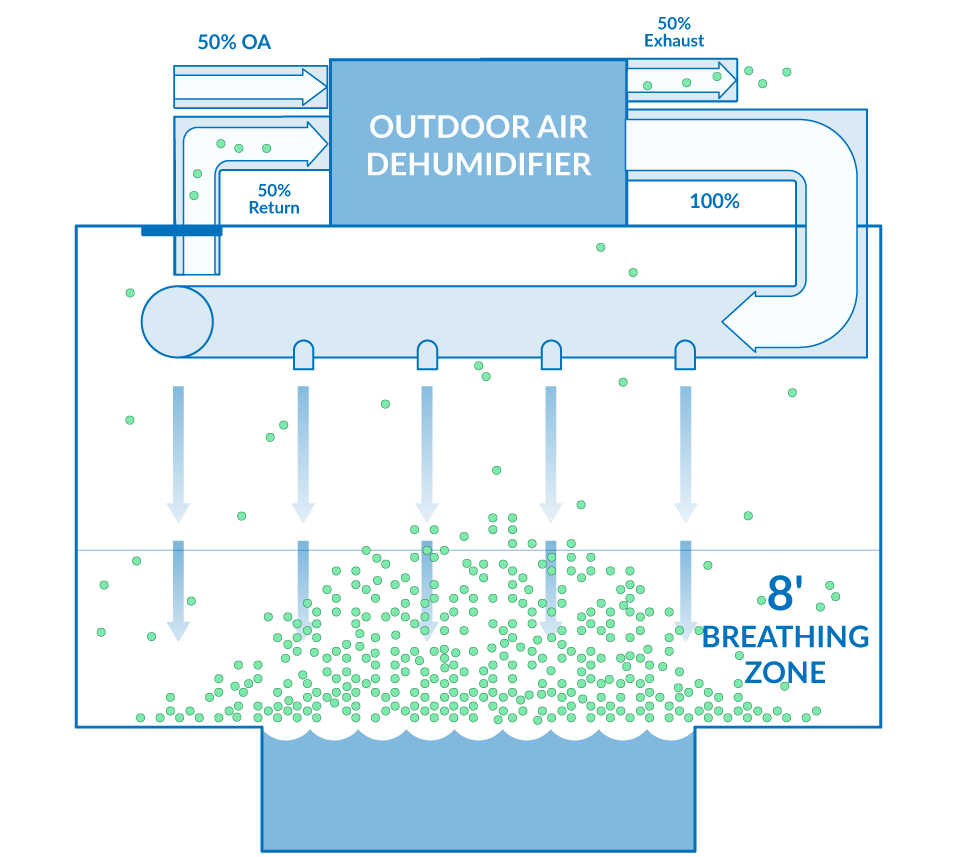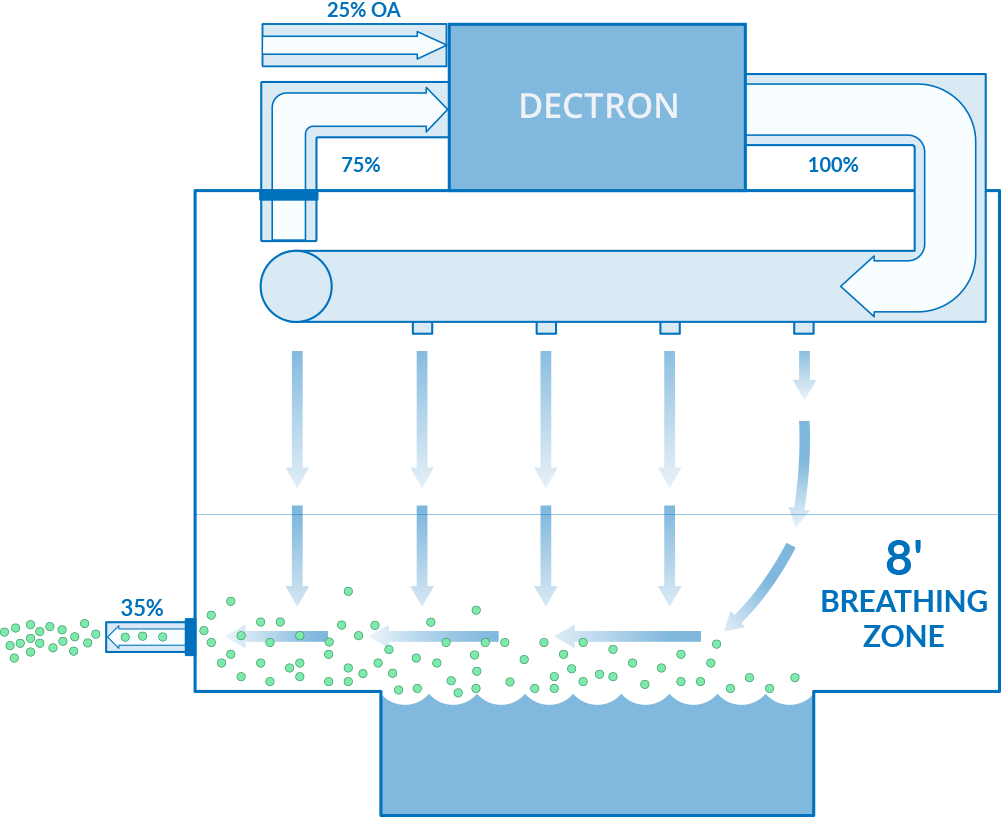No Air Movement
Chloramines are 4 times denser than air, leading them to settle on the pool surface or “breathing zone”, like a layer of scum, in the absence of any air disturbance.

Dilution / 100% Outside Air
The Dilution approach to indoor air quality requires bringing in large volumes of outside air, targeting the pool surface. This causes the chloramine layer to be disturbed and absorbed into the rest of the room, before finally being exhausted.

Source Capture
Source Capture introduces a gentle air current at the pool surface level, which exhausts the chloramine-laden air “at the source”, without distributing the chloramines throughout the pool room. Dehumidifiers manufactured by Dectron can be specified with the Source Capture ready option.

Operating costs for natural ventilation dehumidifiers are heavily affected by climate.
0.4% DB/MCWB
| Dilution (constant outside air) | Dilution (constant outside air and compressor) | Source capture (compressor and optimized ventiation) | Compressor HP | Annual savings | % reduction using source capture | |
|---|---|---|---|---|---|---|
| Denver | $ 66,952 | $ 70,034 | $ 43,481 | 20 | $ 26,553 | 40% |
| Minneapolis | $ 66,213 | $ 68,830 | $ 47,801 | 46 | $ 21,029 | 32% |
| Washington DC | $ 62,558 | $ 65,640 | $ 45,836 | 46 | $ 19,804 | 32% |
| Chicago | $ 64,493 | $ 66,945 | $ 46,611 | 46 | $ 20,334 | 32% |
| Atlanta | $ 59,464 | $ 66,845 | $ 45,353 | 38 | $ 21,492 | 36% |
| Dallas | $ 57,979 | $ 65,360 | $ 45,308 | 38 | $ 20,052 | 35% |
| Boston | $ 60,363 | $ 61,476 | $ 42,236 | 30 | $ 19,240 | 32% |
| Los Angeles | $ 58,405 | $ 58,617 | $ 37,904 | 20 | $ 20,713 | 35% |
| Average | $ 62,053.38 | $ 65,468.38 | $ 44,316.25 | Average reduction using source capture | $ 21,152.13 | 34% |
calculations are based on ASHRAE climate data.
The following myths used to sell 100% outside air (OA) can cost you money, yield dissapointing IAQ, and overall comfort.
Calculations we have seen show OA to be more energy efficient incorrectly assume that compressors are operating at 100% 24/7, 365 days a year. Operating costs are 34% lower on average with source capture.
Many systems originally designed for 100% OA end up with a compressor to ensure more acceptable year round conditions.
In most geographies 100% OA results in unfavorable space condition fluctuations for at least part of the year.
Not only is it expensive and energy inefficient, it results in space condition fluctuations and does not necessarily provide better IAQ.
In certain municipalities, this is in direct contradiction with green initiatives, and potentially code requirement
Ineffective duct design will not be improved by adding more OA.
There are many installations where operating in 100% OA mode results in poor IAQ as the OA does not get to where it is needed in the space.
Volatile Organic Compounds such as trichloramines sit on the water surface (also known as the breathing zone), as they are heavier gases than the outside air added. This is why source capture solutions are a superior choice.
The dilution air approach was mostly abandoned in the 80s when people discovered the compressorized approach to controlling their space delivered more reliable results and saved energy. Source capture delivers superior indoor air quality without the need for bringing in more outside air than the code requires.
DECTRON CANADA
5685 Rue Cypihot,
Saint Laurent, Quebec
Canada, H4S 1R3
1-888-DECTRON
DECTRON USA
491 E Princess St.
York, PA 17403
United States
1-888-DECTRON
EXPLORE
© Copyright Dectron
2025. All Rights Reserved.